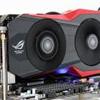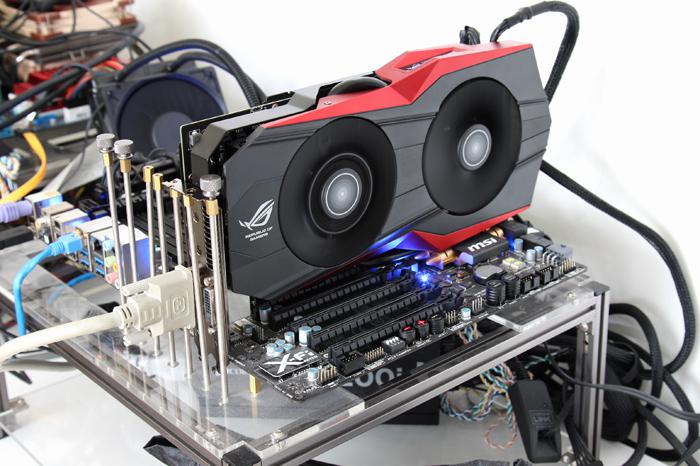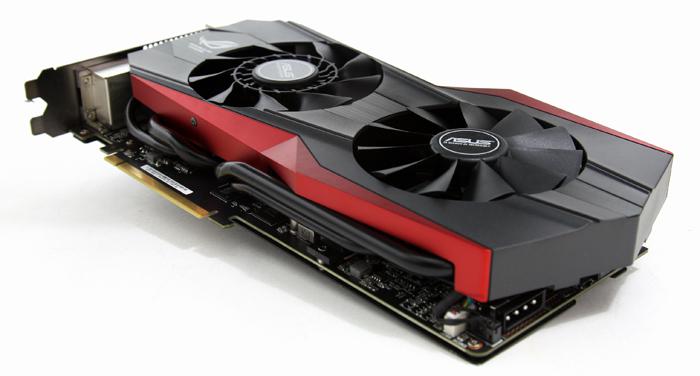Final Words & Conclusion
Final Words & Conclusion
The Hawaii XT based GPU is a tough nugget to deal with. It is grand in performance, but complicated to cool down. Thus far only a few names in the industry have been able to tame the beast, and admittedly with the the Matrix Platinum edition from ASUS, is an excellent piece of hardware was put on the market.
The sheer looks are grand, the cooling sufficient (not superb though) and the noise levels remain completely acceptable. All things combined have created a beast of a R9-290X alright.
Here again, just like the GTX 780 Ti Matrix I have to state though that the card has been built to please the sub-zero overclockers and given the right conditions this card is gonna set records with its impressive VRM design. Unfortunately for the 99.99% of us that sticks with the standard cooling setup and non-hardwired voltage levels, the product isn't very different in terms of tweaking then any other 290X. But yeah it remains to be a truly nice design piece of hardware with terrific components. In the end the performance that the ASUS GeForce GTX Matrix is able to deliver is really good, the DirectCU based cooler is very silent and keeps this GPU chilled down under 70 Degrees C temperature. One big distinction however is the very high factory clock frequency, ASUS factory clocked this product at 1050 MHz on the boost clock, which is VERY nice coming from a reference 1000 MHz base-clock.
Cooling & Noise Levels
So if we think back and picture the reference cooled 290X products, then we can only conclude that they show pretty average to poor temperatures at 95 Degrees C under load. ASUS was able to get the temps under 80 Degrees C under long term load. We actually measured 77 Degrees C as maximum. This is a bit higher then the competition to be honest, then again .. the card hardly makes noise/sounds and the is a huge benefactor.
Aesthetics
The looks, well if they could kill .. they would :) It really is a lovely looking product. This ROG Matrix edition graphics card comes with a DirectCU based cooler and is roughly 10 to 15 degrees Celsius cooler/lower opposed to the reference cooler whist remaining silent. This revision is a dual-slot solution with two distinct fans, which I think just looks great. The PCB is massively customized and I can only spot quality components ensuring a longer lifespan of this product, lovely. The black design, the two subtle and silent fans combined with a hint of red is just fantastic. The card is also very sturdy. There is a metal plate at the top of the card so the card cannot bend when seated horizontally in the PC, also present is a full cover back-plate. Gorgeous to look at, that is for sure. We do miss a mesh or gap at the backside plate GPU location. That could trap some heat.
Power Consumption
Power consumption is OK, the card is rated by us having a 275 Watt TDP. That is high but could have been worse, it is the nature of high-end gaming. I think enthusiast consumers at this performance level will not mind that much about the power draw and be forgiving. That TDP also will make running multi-GPU solutions a bit more complicated. With two card we think an 800~900 Watt PSU would be sufficient. So yeah, it's not great to have a GPU consuming that much power, but it could have been a lot worse.
Game Performance
Any AMD R9 290X in most scenarios will be performing roughly at Titan or GeForce GTX 780 Ti like performance, that it pretty kick ass for just one GPU with a nicer price-tag. Performance wise really there's not one game that won't run seriously good at either of the cards, and that is at the very best image quality settings. And you do it all with a nice 30" monitor of course, at 2560x1440/1600. I mean BioShock infinite at Ultra quality levels is still oozing out 60+ FPS there. Or what about Hitman Absolution with 67+ FPS at 2560x1600 High quality and 2xMSAA? It's really nice performance. And especially for those with Ultra High Definition gaming in mind, the 290/290X will make sense setup in Crossfire. That would be a sweet spot and you'd have 4 GB of graphics memory per GPU.
Overclocking
Overclocking then. The card already is factory overclocked for you by a decent margin, the reference GPU core clock is 1000 MHz on the reference cards, ASUS runs it at 1050 MHz for you. There obviously is room for more tweaking but the product remains hard to be overlcocked. Even after you enable a bit more voltage in LN2 mode, limiters kick in and the card starts to downlock rather fast. You'll achieve roughly 1150 MHz with 1.3 Volts with normal cooling, after which the card will get unstable or start to downclock. Memory wise you'll likely end in the 6500 MHz range (effective data-rate). Overall that brings the card another 5 maybe 10% performance when compared to reference clock frequencies.
Concluding
The Matrix edition of this 290X is superb in its design, looks and low noise levels. Reality remains though that these cards are build for pro-overclocking, and that will not serve the normal consumers that much as they pay for extra option they will never need. That makes the Matrix a hard sell, as these cards will not be cheap. But sure, the great looks and decent cooling cools are impressive. We like the factory overclock, but had hoped to see ASUS challenge MSI with its 1080 MHz on their Lightnings. Cooling wise we measure sub 80 Degrees C which was a little higher then I had hoped for. But coming from the reference card with its 95 Degrees C it surely is a massive improvement. Fluid like game-play is what you get back in return whilst you enable the most intensive image quality settings. And isn't that what it is all about with PC gaming ? We can most certainly recommend the ASUS GeForce GTX 780 Matrix edition if you have the money to spare, it is a terrific product with a high factory overclock and very nice low noise levels. Aside from the TBA price-tag, what's not to like ? As such recommended by Guru3D.com
We are still awaiting a final MSRP pricing of this product from ASUS so that makes this conclusion a bit of a tough nut to crack, but we think this product will run upwards to 650 EUR. Whether or not the price premium is fair in your eyes will obviously be your choice. 14 power phases and LN2 options, it is just not what the regular consumer needs and want to pay for. Then again you can argue, these card where never designed for regular consumers anyway. But man, we sure do like the Matrix cards !
Recommended Downloads
Sign up to receive a notice when we publish a new article
Or go back to Guru3D's front page



